Mingyu Zhang
Take A Step Back: Rethinking the Two Stages in Visual Reasoning
Jul 29, 2024

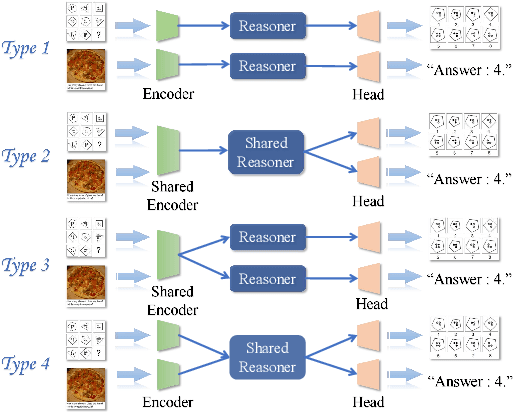
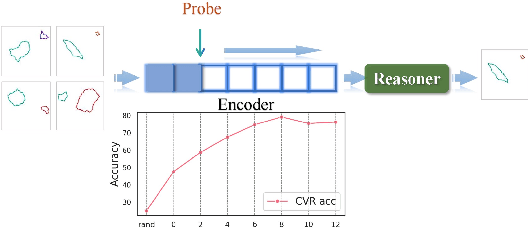
Abstract:Visual reasoning, as a prominent research area, plays a crucial role in AI by facilitating concept formation and interaction with the world. However, current works are usually carried out separately on small datasets thus lacking generalization ability. Through rigorous evaluation of diverse benchmarks, we demonstrate the shortcomings of existing ad-hoc methods in achieving cross-domain reasoning and their tendency to data bias fitting. In this paper, we revisit visual reasoning with a two-stage perspective: (1) symbolization and (2) logical reasoning given symbols or their representations. We find that the reasoning stage is better at generalization than symbolization. Thus, it is more efficient to implement symbolization via separated encoders for different data domains while using a shared reasoner. Given our findings, we establish design principles for visual reasoning frameworks following the separated symbolization and shared reasoning. The proposed two-stage framework achieves impressive generalization ability on various visual reasoning tasks, including puzzles, physical prediction, and visual question answering (VQA), encompassing both 2D and 3D modalities. We believe our insights will pave the way for generalizable visual reasoning.
STAR-GNN: Spatial-Temporal Video Representation for Content-based Retrieval
Aug 15, 2022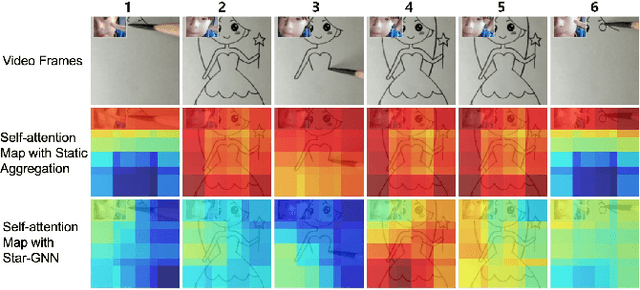
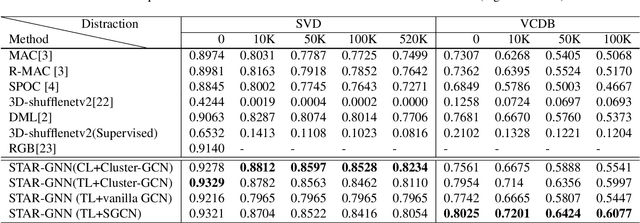
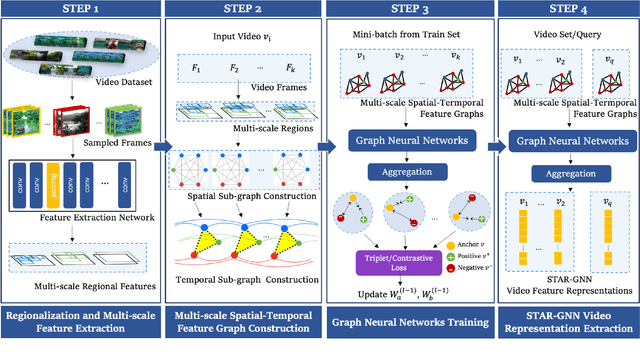

Abstract:We propose a video feature representation learning framework called STAR-GNN, which applies a pluggable graph neural network component on a multi-scale lattice feature graph. The essence of STAR-GNN is to exploit both the temporal dynamics and spatial contents as well as visual connections between regions at different scales in the frames. It models a video with a lattice feature graph in which the nodes represent regions of different granularity, with weighted edges that represent the spatial and temporal links. The contextual nodes are aggregated simultaneously by graph neural networks with parameters trained with retrieval triplet loss. In the experiments, we show that STAR-GNN effectively implements a dynamic attention mechanism on video frame sequences, resulting in the emphasis for dynamic and semantically rich content in the video, and is robust to noise and redundancies. Empirical results show that STAR-GNN achieves state-of-the-art performance for Content-Based Video Retrieval.
InvisibiliTee: Angle-agnostic Cloaking from Person-Tracking Systems with a Tee
Aug 15, 2022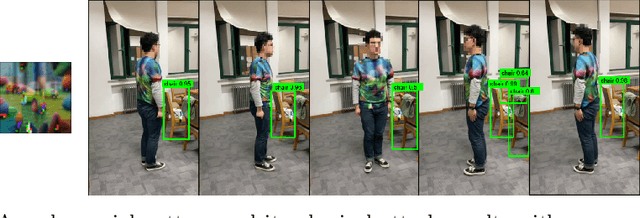
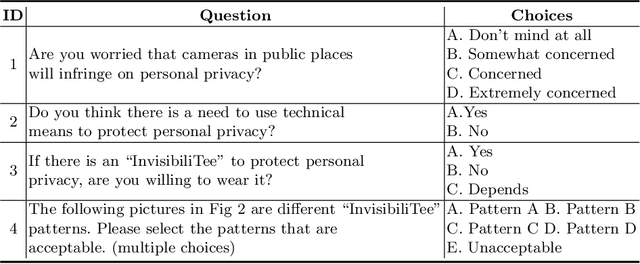
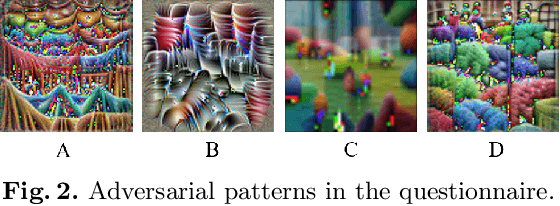

Abstract:After a survey for person-tracking system-induced privacy concerns, we propose a black-box adversarial attack method on state-of-the-art human detection models called InvisibiliTee. The method learns printable adversarial patterns for T-shirts that cloak wearers in the physical world in front of person-tracking systems. We design an angle-agnostic learning scheme which utilizes segmentation of the fashion dataset and a geometric warping process so the adversarial patterns generated are effective in fooling person detectors from all camera angles and for unseen black-box detection models. Empirical results in both digital and physical environments show that with the InvisibiliTee on, person-tracking systems' ability to detect the wearer drops significantly.
Modality-Balanced Embedding for Video Retrieval
Apr 18, 2022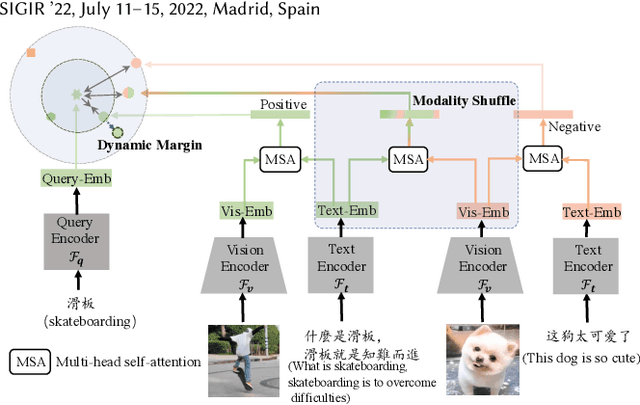
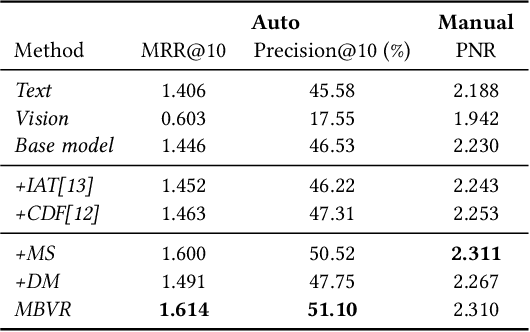

Abstract:Video search has become the main routine for users to discover videos relevant to a text query on large short-video sharing platforms. During training a query-video bi-encoder model using online search logs, we identify a modality bias phenomenon that the video encoder almost entirely relies on text matching, neglecting other modalities of the videos such as vision, audio. This modality imbalanceresults from a) modality gap: the relevance between a query and a video text is much easier to learn as the query is also a piece of text, with the same modality as the video text; b) data bias: most training samples can be solved solely by text matching. Here we share our practices to improve the first retrieval stage including our solution for the modality imbalance issue. We propose MBVR (short for Modality Balanced Video Retrieval) with two key components: manually generated modality-shuffled (MS) samples and a dynamic margin (DM) based on visual relevance. They can encourage the video encoder to pay balanced attentions to each modality. Through extensive experiments on a real world dataset, we show empirically that our method is both effective and efficient in solving modality bias problem. We have also deployed our MBVR in a large video platform and observed statistically significant boost over a highly optimized baseline in an A/B test and manual GSB evaluations.
* Accepted by SIGIR-2022, short paper
Unsupervised Adversarial Attacks on Deep Feature-based Retrieval with GAN
Jul 12, 2019



Abstract:Studies show that Deep Neural Network (DNN)-based image classification models are vulnerable to maliciously constructed adversarial examples. However, little effort has been made to investigate how DNN-based image retrieval models are affected by such attacks. In this paper, we introduce Unsupervised Adversarial Attacks with Generative Adversarial Networks (UAA-GAN) to attack deep feature-based image retrieval systems. UAA-GAN is an unsupervised learning model that requires only a small amount of unlabeled data for training. Once trained, it produces query-specific perturbations for query images to form adversarial queries. The core idea is to ensure that the attached perturbation is barely perceptible to human yet effective in pushing the query away from its original position in the deep feature space. UAA-GAN works with various application scenarios that are based on deep features, including image retrieval, person Re-ID and face search. Empirical results show that UAA-GAN cripples retrieval performance without significant visual changes in the query images. UAA-GAN generated adversarial examples are less distinguishable because they tend to incorporate subtle perturbations in textured or salient areas of the images, such as key body parts of human, dominant structural patterns/textures or edges, rather than in visually insignificant areas (e.g., background and sky). Such tendency indicates that the model indeed learned how to toy with both image retrieval systems and human eyes.
 Add to Chrome
Add to Chrome Add to Firefox
Add to Firefox Add to Edge
Add to Edge